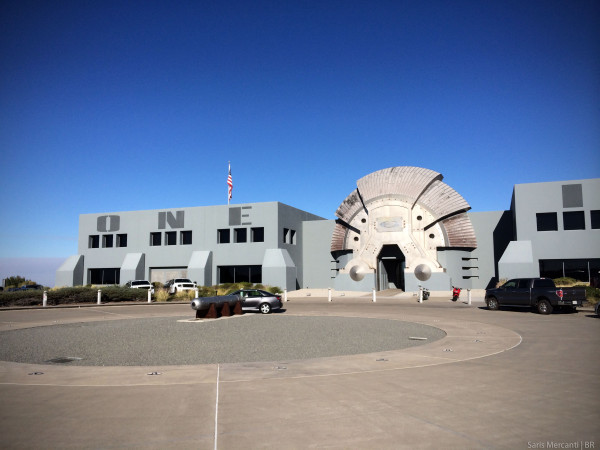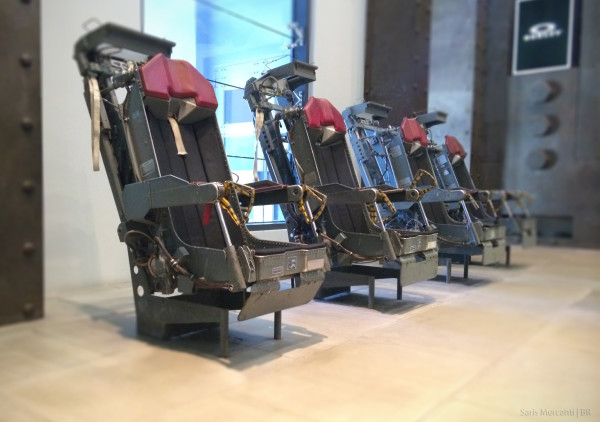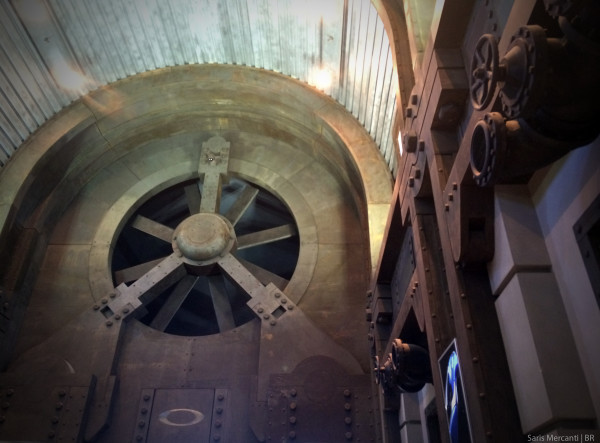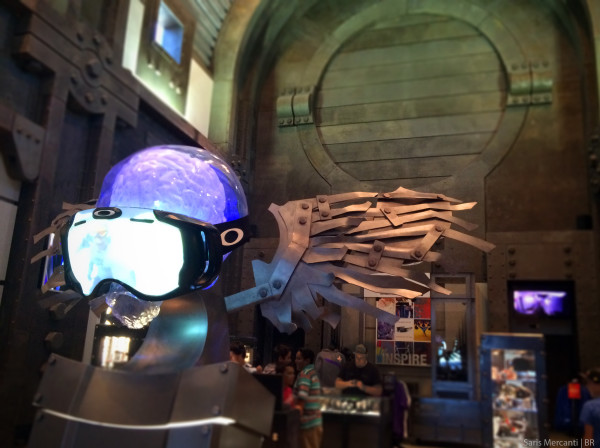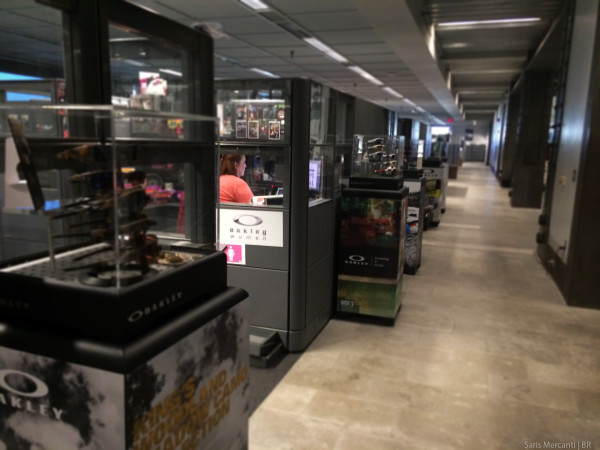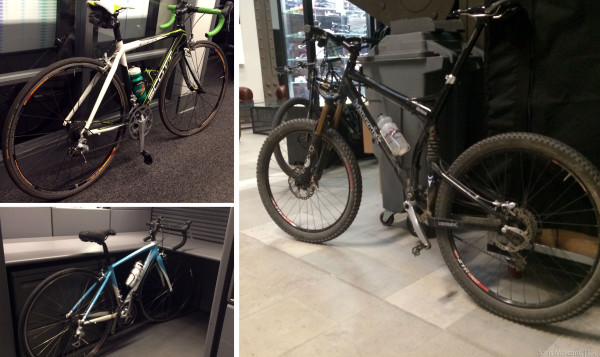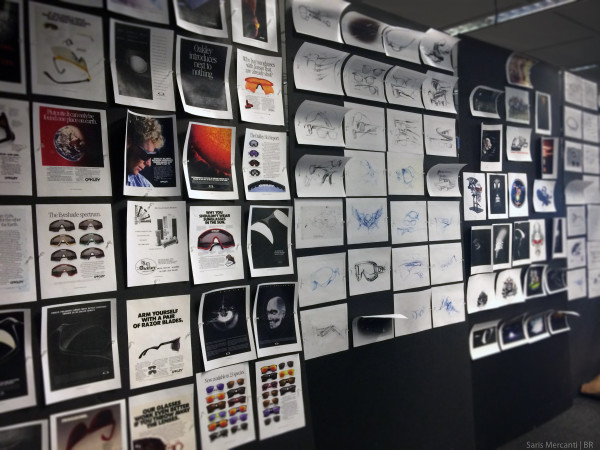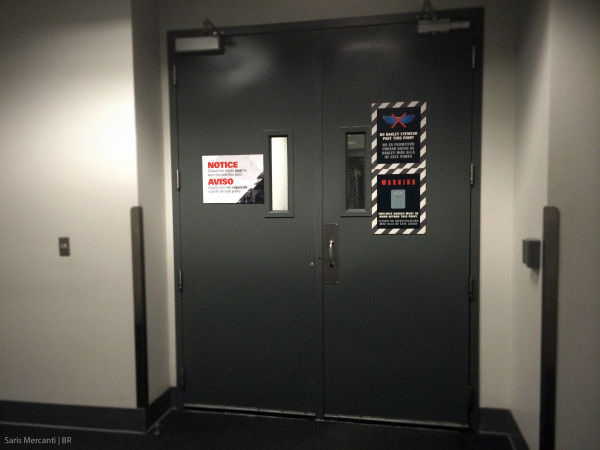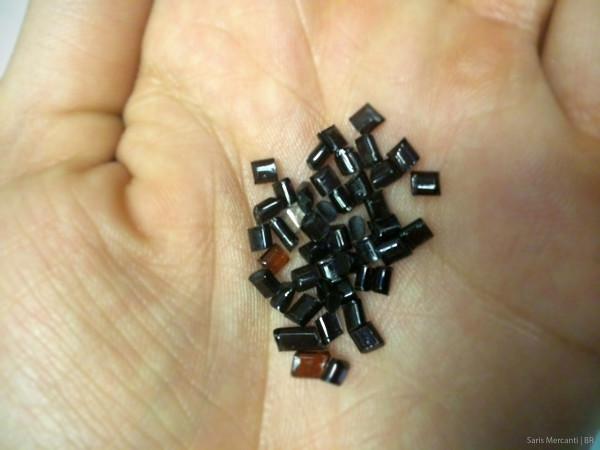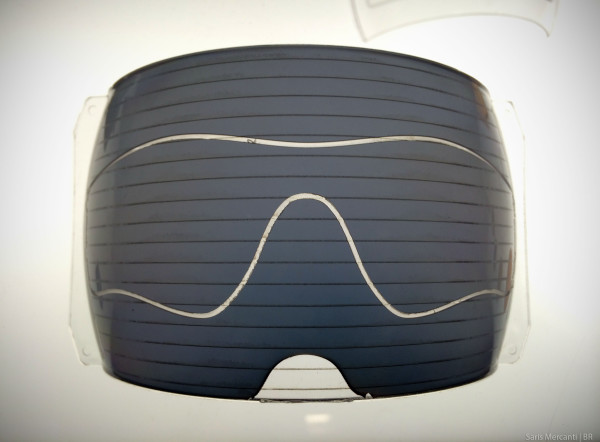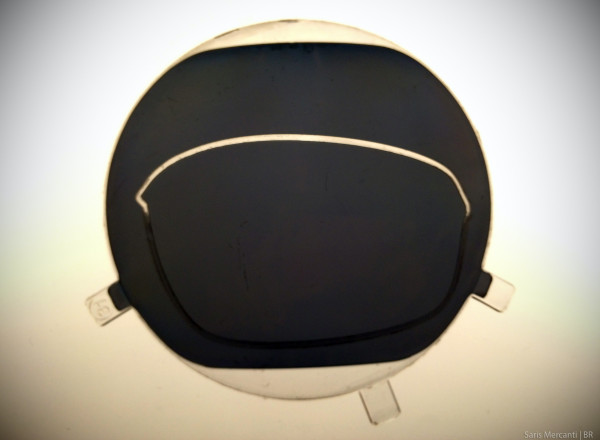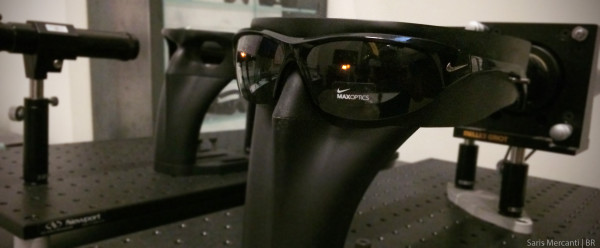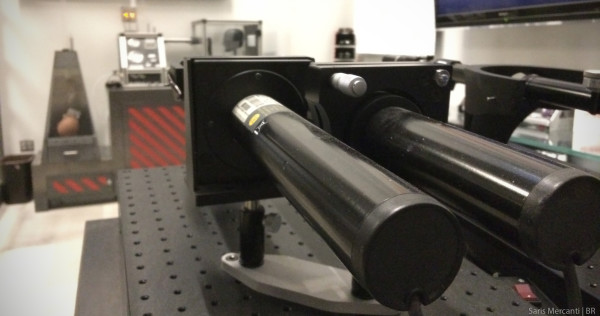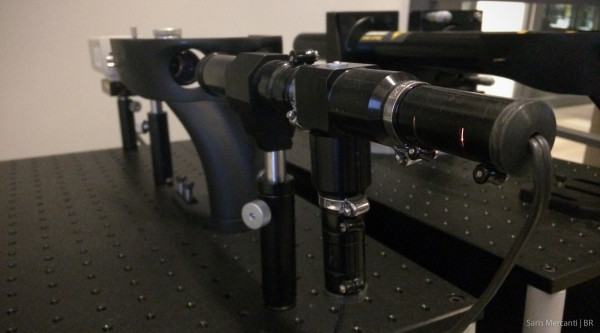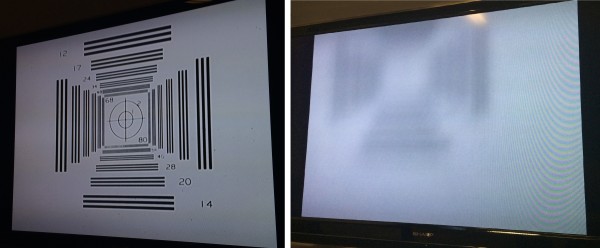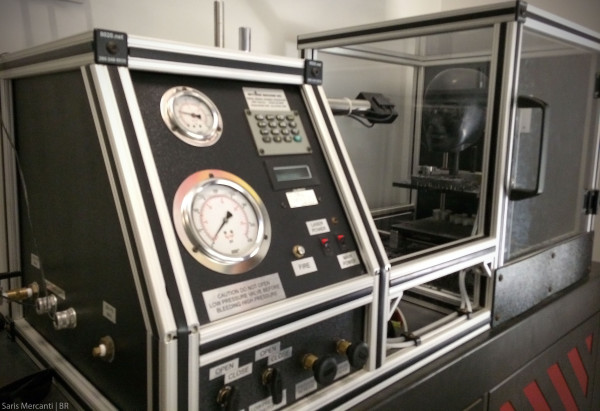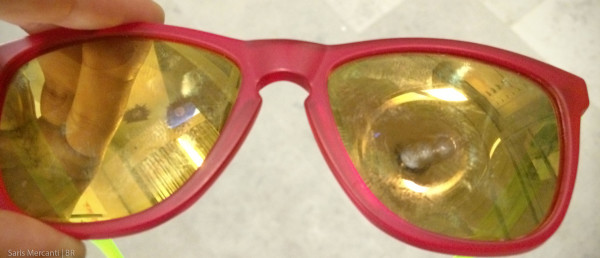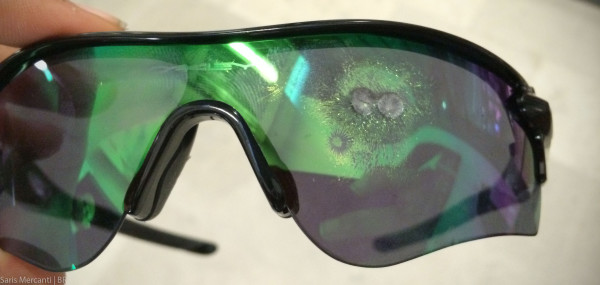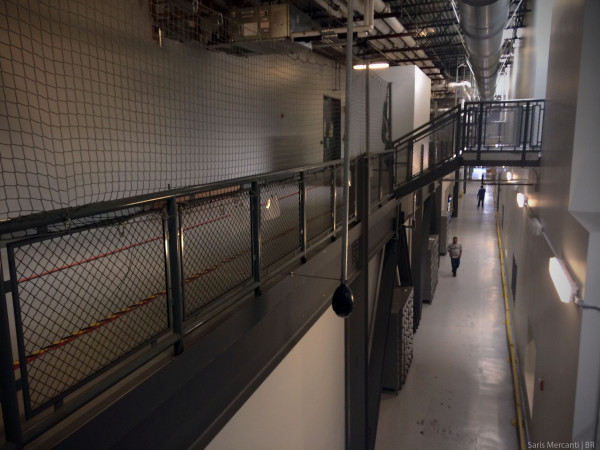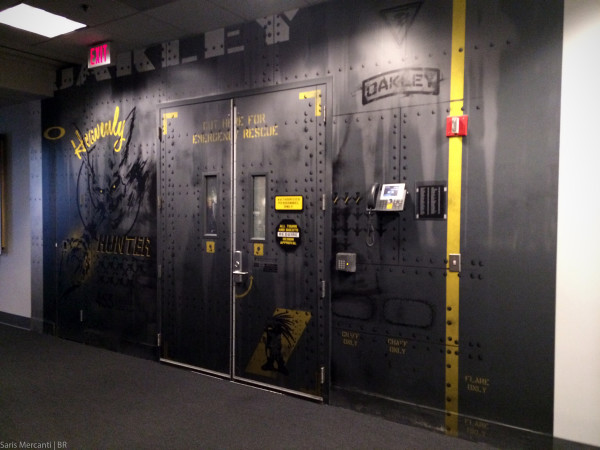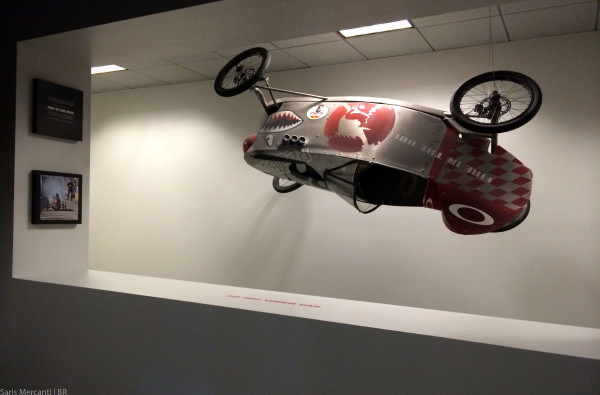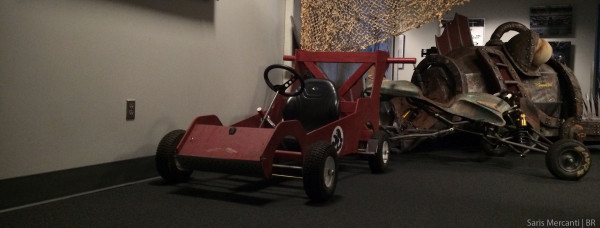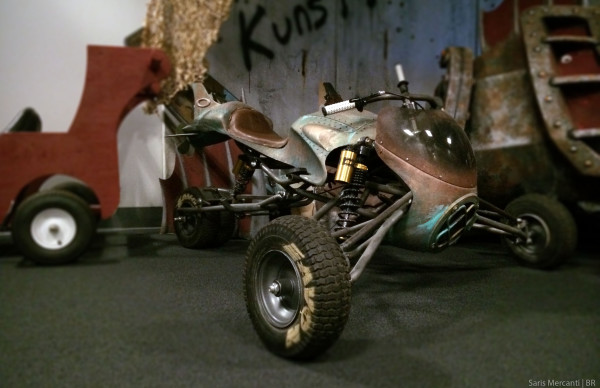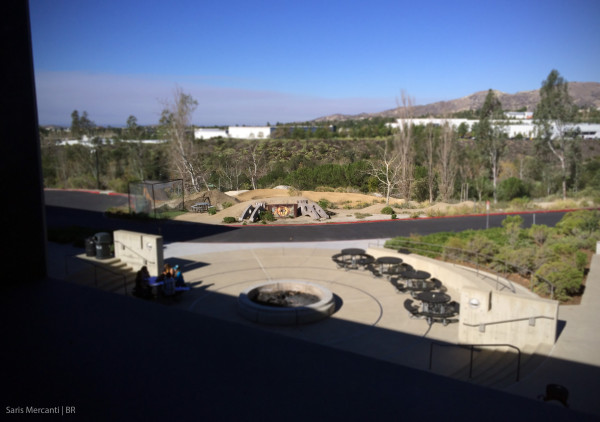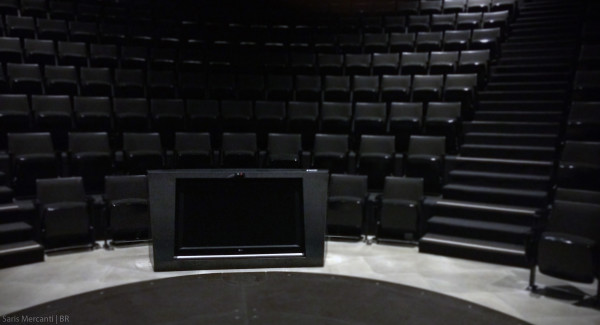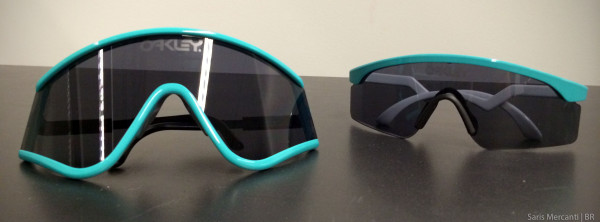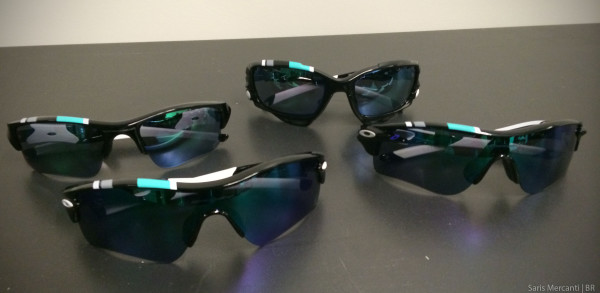Rising like a shining city on the hill, Oakley’s sprawling dystopian-esque headquarters in Southern California is guarded silently by a fully functioning tank, several strategically placed canons (again, fully functional), and an incredibly unique design ethos that is visible in both the building’s architecture and the company’s products.
Everyday between 1,500 and 1,700 employees converge on this location to produce 70% of the sunglasses and goggles that Oakley sells globally. So take a jump past the break to tour the extraordinary complex and our special sneak peak at a new product launch…
The Oakley building exterior and layout was designed by CEO Colin Baden. A former architect, during the design process he crafted the signature entrance in one bout of inspiration. The boss wasn’t stoked on the look after construction had begun and demanded a redesign, so Colin added the two bullet tips that frame each side of the doorway.
The ejection seats in the lobby, blast walls, and industrial aesthetic was intended to be timeless and inspire those within. The feel of this mad scientist lair was galvanized by three of Hollywood’s greatest science fiction films. As we take a look at the office, see if you can guess them.
High above the lobby is a freestanding “fan.” It doesn’t actually rotate of it’s own accord, but the story goes that a mischievous VP once crawled into the recess and rigged up a chain and motor to the fan. He wanted to see how long it took for employees to notice the slowly articulating arms. He was laughing for over two weeks until others caught on.
Directly across from the entrance is a small retail area with cases of premium sunglasses. This mechanical angel lays watch over guests and shoppers.
On the opposite side of the ominous lobby walls lies an ordinary office environment. Only filled with nicer cubicles and more expensive eyewear than most of us are used to.
Anyone else love Mavericks? We did a double take when we saw this one! The frame may be a few years old but the owner has it kitted in all the latest goodies, including a Kash coated Fox fork, XTR groupset, and custom wheels.
There are also lots of bikes lurking around every corner. Many employees go on lunch rides and the surrounding hillsides are littered with mountain bike trails.
Filling the walls with creative inspiration are designs from campaigns and product sketches from past and present.
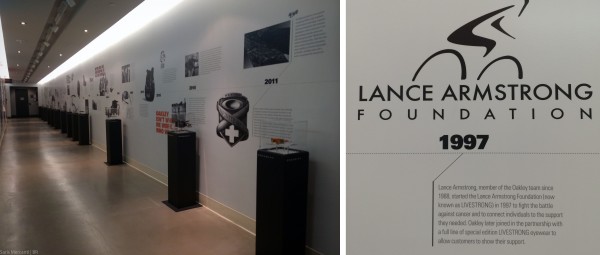
Down yet another corridor is the Oakley museum. The timeline marks momentous occasions in the company’s history and each case holds some of their most seminal products.
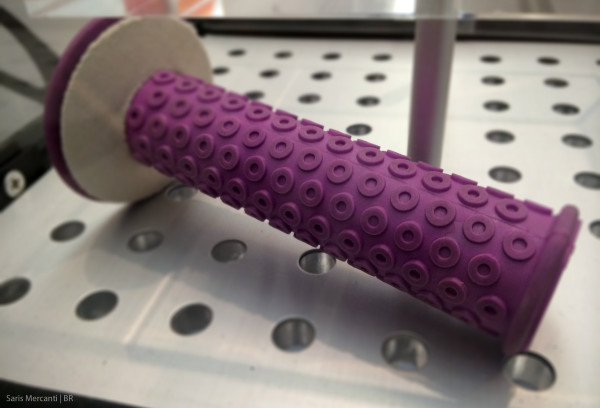
At the very end of the hallway is a rare find – The Grip. It’s a product many of you with roots in MX and the early days of BMX will remember fondly.
The grips were designed by Oakley founder James Jannard after he dropped out of the USC undergraduate pharmaceutical program. With $300 in his pocket, James set out in his vehicle for a summer just trying to survive, but his grips revolutionized the industry.
The grips utilized a new material he dubbed “Unobtanium,” long before James Cameron stole the name for his film with the translucent teal aliens. The material was comfortable, tacky when wet, and felt better and better the more you abused it. Jannard’s grips where nothing like the hard molded rubber that was prevalent in the industry at the time. This material is still used today at Oakley to produce the grippy nose and ear pieces found on many of the active wear sunglasses.
Today it’s optics (and over the top designs) that Oakley is famous for and it’s sunglasses you’ve probably come to see. Unfortunately, this is as close to the production floor as we could get with our camera, but behind these doors is a factory that produces 70% of all Oakley sunglasses. The factory floor employs three different shifts working around the clock to produce forty thousand sunglasses a day.
Due to the large demand for the company’s optical products, they’ve had to expand. The company now produces sunglasses in identical factories in both Italy and China. The benefit to this model is that by producing product closer to market, they’ve been able to cut down on shipping costs, the associated environmental impact, and turnaround time to distributors.
Lenses are made from poly-carbonate pellets that are sourced and tinted locally at a lab in Huntington.
The material is heated then molded using direct injection. Polarized lenses are made slightly differently. The polycarbonate is baked to 500 degrees, to just under what would alter the optics of the filter by creating carbon deposits.
All lenses are cut at HQ, even prescription orders. To ensure the best optical performance, lens pairs cut together stay together. Once cut, the lenses are hand washed, put through an ultrasonic cleaning to remove contaminates, agitate minerals, and then a hard coat is added.
For glasses with iridium coatings, lenses go into special trays and are then placed in vacuum sealed closets. Then lasers heat metals within the closet to vaporize and bond the coating to the lenses. The lenses are then assembled into frames that are also sourced from a local vendor. At the end of the assembly line, each pair of sunglasses is inspected up to four times before being packaged.
What truly sets Oakley sunglasses apart isn’t the state of the art production facility buried within its global HQ, it’s the grueling torture tests and optical standards each product must pass. Overlooking the factory floor is an R&D facility that frequently pulls samples from the production floor for evaluation and is always testing new prototypes and models.
While we weren’t allowed to tour the R&D facility, we did get a look at some of the equipment they use to test their optics. The first of four tests we were shown was this prism test:
A set of lasers is fired through a pair of sunglasses. The laser sights simulating the viewers line of sight and should line up together where they intersect the wall. When we place non-prescription lenses in front of our eyes, the optics can bend light, which is why the points shown above are not centered together.
When optics alter our line of sight, the brain has to work overtime to correct for the signal. This is particularly disruptive when playing sports that require quick physical reactions to rapidly changing visuals, like the kind frequently encountered during technical singletrack descents. That kind of eye strain can actually lead to migraines.
The next test is a clarity and refractive test.
To the naked eye it’s easy to make out the definition matter, but the image on the left shows how poor optics can distort clarity. You can find a comparison test between Oakley’s sunglasses and some of their major competitors here.
In addition to trying to achieve the highest performing optics, Oakley tests all of their active wear sunglasses to the same standard (the ANSI Z87.1 tests) as the safety glasses you wear at the shooting range or in the lab. Their military issue sunglasses are built to withstand even more abuse.
Each pair of sunglasses must pass a high velocity and high impact speed test. The high velocity shown in the first part of this clip is where a quarter inch steel bearing is shot at close proximity at the lenses. The bearing hits the lenses at a speed of 102mph.
In the second test, a metal spike weighing over a pound (500 grams) is dropped from just over four feet (51.2″). Want more carnage? You can see video of other competitors’ sunglasses tested here.
This is what a competitors pair of sunglasses looks like after testing.
The Froggers are a popular pair of lifestyle sunglasses that aren’t designed to meet the same standard as Oakley’s top of the line active wear lenses, yet they held up easily to the bearing and spike test.
This is the pair of sunglasses abused in our video. The double impacts on the top right corner are where the metal spike was dropped, twice. The small impact on the bottom left is where the bearing glanced off the lens.
Now that we’ve seen (but mostly read) about the testing and manufacturing process, we can slip out of the factory and look at the toys.
When the walls aren’t elaborately ensconced in dramatic dystopian costume, they’re littered with artwork from classic campaigns and impressively themed graphics.
Also hanging around the office are things like this. Originally commissioned by the design staff to compete at the company-wide downhill soap box derby, this cart beat out 23 other competitors in both speed and style, and would go on to represent the company at…
…what else but the Redbull Soapbox Derby.
The Mustang inspired racer hangs over a large stairway that has also been used as a backdrop in an Oakley sponsored BMX edit.
Just a short jaunt down the hall is a little red mario kart racer and whatever that thing is in the background.
We’re not entirely sure what to call this, but it took lots of self restraint not to try and take it for a spin.
It was particularly hard not stealing the three wheeler with the Oakley pump track situated just outside the building. Alongside the track are a set of monster jumps for sponsored athletes to ride and a new line utilizing one of the former Red Bull Rampage Oakley Sender is currently in the works.
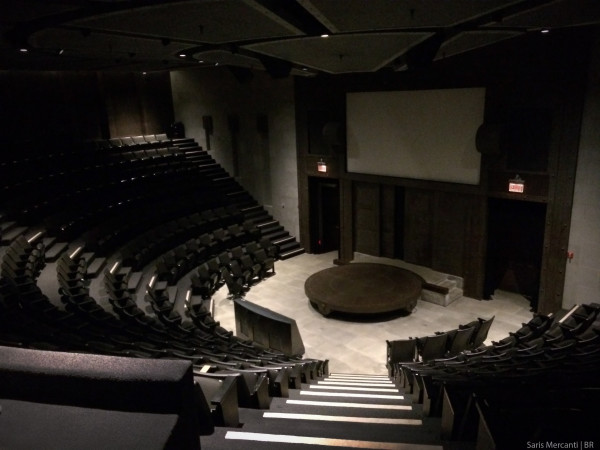
Just past the toys was the final stop on our tour – the Thunderdome. This theater can seat up to four hundred and forty and has hosted everything from company meetings to Ricky Carmichael (aka the GOAT or Greatest of All Time) boosting down the stair set on his race prep’d 450 dirt bike.
Here at the floor of the Thunderdome, note cards aren’t necessary. A large screen acts as a teleprompter should you need one, and to the right of this view – the exit back to the lobby.
Have you figured out yet what three films influenced Colin during the design of the building? I just gave away the first…
The three films where Mad Max, Aliens, and Blade Runner.
Sneak Peak
Later this year Oakley will be launching it’s heritage collection and I had the good fortune to find and photograph these pre-production samples. These three models shown from left to right are the Eyeshades, Razorblades, and Frogskins.
For cyclists, these two models should be of particular interest. After all, they’re what Greg LeMond was sporting when he won his three Tour de France titles.
Looking to the future, the company is also releasing a special “30 years” of innovation edition of their RadarLock, Radar, Flak Jacket XLI, and Racing Jacket. Each will have a 30 graphic laser etched into the corner of each lens, and a printed stripe graphic that utilizes the same colors of the original sunglasses.
Special thanks to Justin & Alyssa for the great tour!
